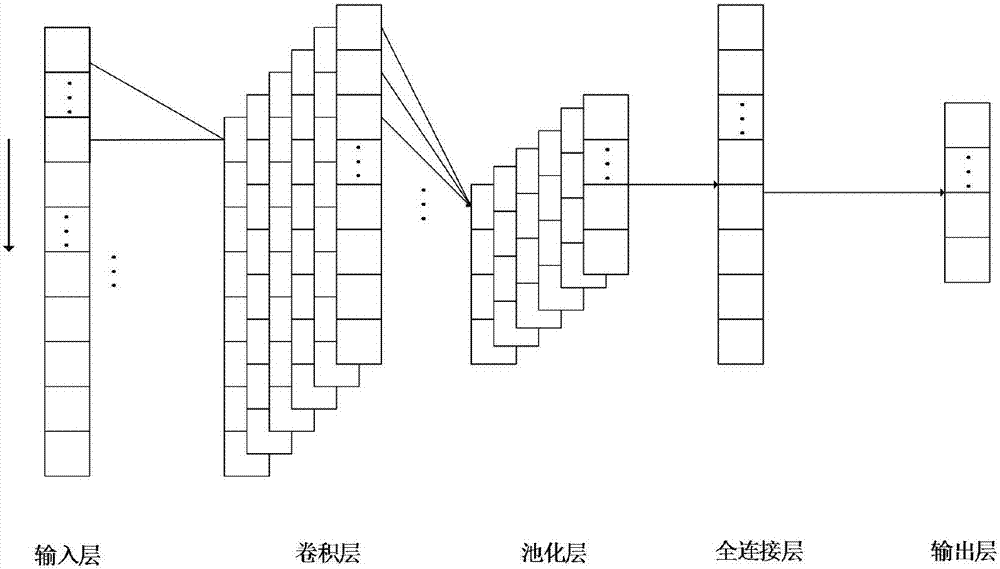Radar radiation source signal identification method based on one-dimensional convolutional neural network
A technology of convolutional neural network and recognition method, applied in pattern recognition in signals, neural learning method, biological neural network model, etc., can solve problems such as feature selection, time-consuming, dimension disaster, etc., and achieve simple implementation and training The effect of low cost and small computational cost
- Summary
- Abstract
- Description
- Claims
- Application Information
AI Technical Summary
Problems solved by technology
Method used
Image
Examples
Embodiment Construction
[0061] Specific embodiments of the present invention will be described in detail below.
[0062] refer to figure 1 , a radar emitter signal recognition method based on a one-dimensional convolutional neural network, the steps are as follows:
[0063] (1) Generate radar emitter signal data set
[0064] The radar emitter signal data set is generated by MATLAB simulation. The radar emitter signal data set includes seven different modulation methods, namely CW, LFM, NLFM, BPSK, QPSK, BFSK, and QFSK. Each signal ranges from -10dB to 6dB every Generate equal number of samples at 2dB SNR, where:
[0065] The radiation source signal parameters are set as follows:
[0066] The sampling frequency is 2GHz, and the number of sampling points is 512;
[0067] CW, LFM, NLFM, BPSK, QPSK carrier frequency is set to 200MHz, LFM frequency offset is set to 50MHz, BPSK uses 13-bit Barker code, and QPSK signal uses 16-bit Frank code;
[0068] The two carrier frequencies of BFSK are 200MHz and 40...
PUM
 Login to View More
Login to View More Abstract
Description
Claims
Application Information
 Login to View More
Login to View More - R&D
- Intellectual Property
- Life Sciences
- Materials
- Tech Scout
- Unparalleled Data Quality
- Higher Quality Content
- 60% Fewer Hallucinations
Browse by: Latest US Patents, China's latest patents, Technical Efficacy Thesaurus, Application Domain, Technology Topic, Popular Technical Reports.
© 2025 PatSnap. All rights reserved.Legal|Privacy policy|Modern Slavery Act Transparency Statement|Sitemap|About US| Contact US: help@patsnap.com



